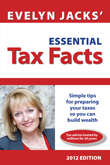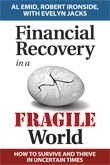Last updated: April 04 2012
Evelyn Jacks: Family tax-efficient investment strategies
If the federal budget brought home one lesson about our post-crisis reality it is the importance of being financially self-reliant. If you were born on or after Feb. 1, 1962, you will not qualify for Old Age Security (OAS) benefits until you are 67. That means you need to create another $13,000 in retirement savings to replace those benefits.
Yet, economists forecast negligible net returns after inflation and taxes over the next five years ó and that's going to make filling the gap more challenging. Fortunately, your tax return is one vehicle that can propel your efforts forward.
That begs the question: are you taking tax rules into account when you are planning your family's investment strategy? Tax-efficient investment-income planning uses available tax rules to shift income among family members in order to equalize the amount reported by each family member, thereby reducing taxes for the unit as a whole. That helps your family create more "redundant income,î allowing you to save more money for the future. Done well, an effective tax strategy will also temper future tax erosion on the accumulated capital pools dispersed among family members.
The first goal, then, is to create taxable income in the hands of each family member by using the progressive nature of the tax system ó that is, all the tax credits and deductions to which you are entitled as a family unit ó to average down the tax burden for the family as a whole.
Be sure to discuss the following elements of a successful and tax-efficient family investment plan with your tax and investment advisors:
ï Recover errors and omissions. First and foremost, always use the Taxpayer Relief Provisions to recover taxes owing to each family member as a result of errors or omissions on previously filed returns. This includes filing omitted returns, which is critical if you are to maximize RRSP contribution room as well as carry forward investment provisions such as capital losses which can reduce future taxes payable. Errors and omissions that end in recovered tax refunds also provide new capital for investment purposes. However, be audit-proof, as opening prior returns invites a check-up by the taxman.
ï Maximize access to family tax-free zones. Begin with the Basic Personal Amount by taking advantage of family income-splitting opportunities. Also, by transferring important tax credits from one family member to another ó such as tuition, education and textbook amounts ó those tax-free zones are increased, reducing taxes for everyone. Again, leverage those tax savings by investing refunds in the right tax-exempt or tax-deferred investment vehicle.
ï Put capital in the right hands. Know how to transfer assets among family members. Inter-family investment loans, for example, can shift money to the lower-income family member from a higher income-earner during lifetime and at death. To do so legally, however, you'll need to transfer income and capital within the confines of the Attribution Rules, which can allocate investment income back to you on certain assets transferred to family members. You can avoid the Attribution Rules by putting money into tax-exempt assets for family members, such as Tax-Free Savings Accounts or a principal residence.
ï Use tax-deductible debt. Understand what debt is tax deductible and how to shift capital losses from one spouse to another. In addition to interest expenses, other deductible carrying charges include safety deposit box fees, investment counsel fees as well as accounting fees for investment-income calculations.
Itís Your Money. Your Life. Tax-efficient investing increases income, which leads to the more effective accumulation, growth, preservation and transition of family wealth. Tax-filing time is a great time to educate yourself and family members: ask your tax and investment advisors the questions for which you need answers. They can help you set up your 2012 tax year to benefit from tax-efficient investing.
Evelyn Jacks, president of Knowledge Bureau, is author of Essential Tax Facts 2012 and co-author of Financial Recovery in a Fragile World. To purchase your books, visit www.knowledgebureau.com/books.asp


